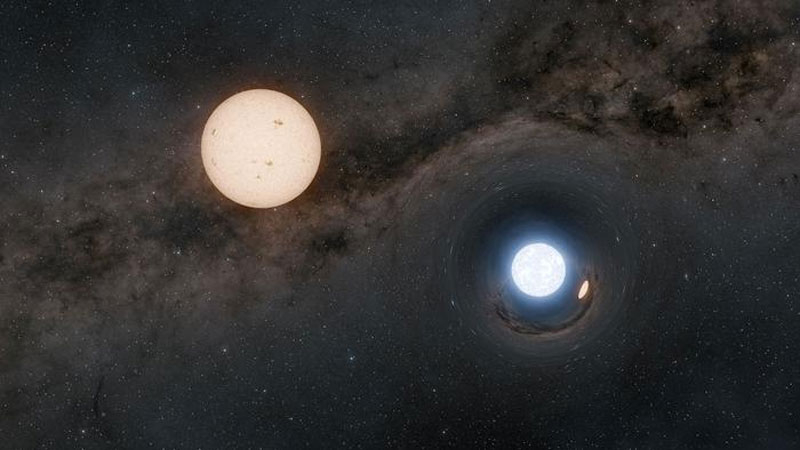The European astrometric satellite Gaia has once again become a source of unique data. Thanks to his observations, it was possible for the first time to detect neutron star candidates in wide orbits around stars similar to our Sun. There is an element of miracle in this: ordinary stars should not have survived the supernova explosions that left behind the neutron star. But this happened, which again poses a challenge to theorists to explain what is happening in the Universe.

An artistic representation of a neutron star near a sun-like star. Image source: Caltech/R. Hurt (IPAC)
The discovery was made by an international team of astronomers led by scientists from the USA. Gaia’s data found 21 neutron stars, each lying in wait in a wide orbit around its own sun-like star. All candidates are removed from their stars at distances approximately three times greater than the distance from the Sun to Earth. They were discovered solely due to the gravitational influence on their stellar pairs, causing them to oscillate as lighter agents.
«These are the first neutron stars discovered solely due to their gravitational influence,” the scientists explain. “Gaia” was able to detect these fluctuations primarily due to the sufficient distance of the neutron stars from their pairs. The suns make one revolution around their neutron partners in a period of six months to two years – such fluctuations are well detected by Gaia instruments. Previously, neutron stars in binary systems were recorded only in close pairs, when the superheavy nuclei of dead stars pulled the matter of a close neighbor and absorbed it with a release of energy in the X-ray and gamma-ray range. New “neutron” candidates in binary systems with suns sat quietly and did not shine.
«The discovery of these new systems shows that at least some binaries survive these catastrophic processes, although models cannot yet fully explain how,” the scientists explain. However, for now this is considered an extremely rare discovery. According to scientists, only one sun-like star in a million can be paired with a neutron star in a wide orbit.
Scientists intend to use a similar method for detecting invisible partners, but a neutron star cannot be directly seen, to detect silent black holes. Such ones have already been discovered, and even quite close to Earth. In the future, scientists hope to discover more such objects, which will also force theorists to work hard.